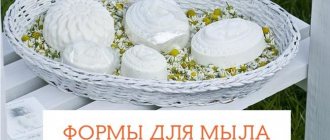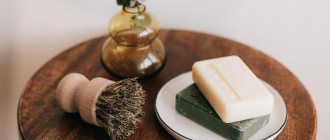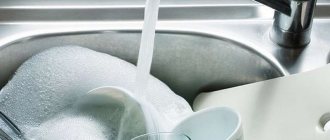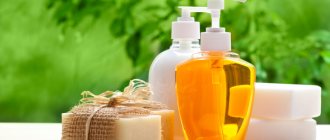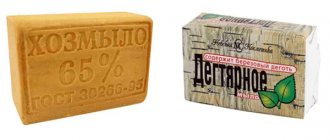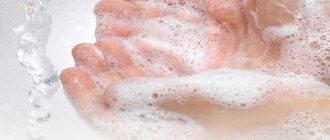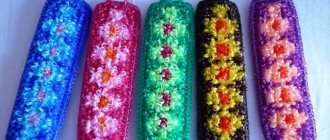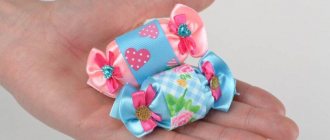Modern household chemicals can cope not only with any contaminants, but also cause certain harm to the human body. Increasingly, people are complaining of allergic reactions as a result of using one or another household chemical. We are especially talking about the use of such products in apartments where small children live. Many modern mothers are faced with the fact that their babies suffer during contact with those surfaces that were previously treated with household chemicals. In such situations, when you need to keep the apartment clean and at the same time worry about the health of your child, many mothers have come up with an excellent option that ideally combines these two points. In this case, we are talking about cleaning using only natural products, in particular laundry soap. Some women even manage to make this product themselves. After reading this article, you will learn the simplest options for making laundry soap.
Benefits of making laundry soap at home
The first and most important advantage is the complete naturalness of the finished product. Thanks to its unique properties, this product can cope with almost any stain. Another advantage of this product is its low cost. In other words, to prepare it you will need simple improvised means that are found in any home. In addition, the prepared portion lasts for a long time.
Slippery topic
People love little rituals. A unique kind of entertainment. Especially when these obligatory traditions are associated with something that you really like. A kind of little hobby, passion.
Well, many people love the bathhouse. They prepare all sorts of cunning brooms and infusions for the heater for her and buy special hats and scoops. This is also a type of ritual. And I also love the bathhouse. But my hobby is of a different nature. Personally, I make soap.
The hobby is old, it is already more than a decade old. It is difficult to say when it took shape into some kind of necessary need. It’s just that since childhood I liked the passing professions - coopers, blacksmiths, carpenters, tinsmiths, stove makers.
I myself mastered some of them at a very decent level. The fact that one of them turned out to be a soap maker can be considered an accident - I could just as well have turned out to be a shepherd or something else. But it turned out the way it turned out.
I was planning to try for a long time - the history of the hobbies of Father Fyodor Vostrikov from “12 Chairs” probably got in the way. But one day everything happened.
My then life partner had delicate, sensitive skin that was constantly dry and irritated by any household chemicals - all sorts of creams and rubs helped, but it was troublesome. I had to learn about soap and experiment.
It didn’t work out right away, but it worked out. And along with the skill came the knowledge of a lot of things. Especially the fact that two thirds of modern opuses on this topic are complete, excuse me, bullshit. The lion's share of articles has nothing to do with the soap maker's craft. Much closer to advertising. Something like a stupid and not very honest article about the style of a dress in a fashion magazine. Not only are there a lot of lies, but even the lies are so-so - in my childhood I could have done worse when I had to hide the diary. Briefly speaking. I wasn't impressed.
Preliminary preparation for the soap production process
To make high-quality laundry soap with your own hands, you will need to prepare all the ingredients in advance. During the cooking process, be sure to follow safety precautions. The whole point is that you will be working directly with alkali, and this carries a certain degree of danger. To protect yourself from various injuries, be sure to wear household gloves. It is advisable to wear a respirator, so you will not come into contact with the fumes that will be released during the cooking process. You can also put on an old robe so as not to stain your clothes with soap particles.
To ultimately get one and a half kilograms of soap, you will need to take a certain amount of ingredients. So, you need to prepare 400 milliliters of cold water, 150 grams of caustic soda. You will also need one liter of sunflower oil.
What is handmade soap made from?
At home, soap is made in different ways: from soap remnants, on a ready-made soap base, from natural vegetable or animal fat.
Experienced needlewomen practically do not use old soaps and cheap auxiliary components in their work, but purchase professional soap-making kits.
The first option is the most economical and simple, since you only need to melt ready-made soap bars and add additional ingredients as desired. Microwaves and ovens are used for melting.
At the initial stage, fragments of old unused soap are quite suitable.
You can also use ready-made soap making kits at home. The soap base must be melted and essential oils, scrubbing ingredients, spices and other ingredients added to it.
Baby soap does not contain unnecessary additives, coloring pigments or perfumes.
The latter method involves the use of fat and alkali (sodium hydroxide), when working with which it is important to follow safety precautions and ensure that the substance does not get on the skin, otherwise you can get a chemical burn. Fat must be at least 65%. The following oils are suitable: palm, coconut, olive, shea and others that make the soap hard.
For the first experiments, soap residues with a neutral odor and uniform color may be suitable.
For foam formation and stabilization, castor, palm kernel, and coconut oils are added. For a caring effect, you can include avocado, grape seed, almond, macadamia nut and others oils.
You can try to prepare a whole bar of good bath soap from soap remnants that match each other in shade.
The simplest technology for making laundry soap
The technology for making laundry soap from scratch is not that complicated. First of all, you need to carefully pour the baking soda into the water and start stirring gradually. As soon as you start cooking, be sure to turn on the hood and open all the windows so that there is as little fumes in the room as possible. Stir the soda with a wooden stick until it is completely dissolved. Then begin to carefully pour the soda solution into the preheated oil. Do not pour the sediment with undissolved soda into the oil. It needs to be extinguished with vinegar or citric acid.
Stir until thickened
Start stirring the solution slowly, after a while you will begin to notice that the liquid will begin to turn white and thicken. As soon as you see these changes, immediately connect the mixer and use it to cook. If you choose this recipe, then at the end the prepared mass should resemble thick sour cream.
Soap mold
Begin to carefully pour the prepared mixture into the molds. The next day the soap will have thickened, you must take it out and put it on a tray so that it fully matures within 3 weeks.
Safety regulations
Laundry soap contains caustic soda, which should be handled with extreme caution. Necessary:
- remove children and pets from the premises;
- clear the work surface: nothing should interfere with the movements of the soap maker;
- Prepare clean and dry dishes, soap molds, and a water thermometer. Neither the dishes nor the molds can then be used for cooking. Silicone containers or even cardboard milk and juice bags cut lengthwise are suitable as forms;
- turn on the hood or open a window;
- All operations should be carried out wearing glasses and a respirator (medical bandage), since alkali vapor is extremely dangerous for the mucous membrane;
- wear work clothes with long sleeves and high gloves made of thick rubber. If a soap solution splashes onto an open area of skin, it should be immediately rinsed with acidified water, and then with a large amount of running water.
Features of liquid laundry soap
Many modern housewives claim that liquid laundry soap is much better than a solid base. To prepare it, you will need to take 100 grams of ordinary laundry soap, 20 grams of water, a teaspoon of corn starch and potassium hydroxide. Initially, you will need to thoroughly grind the soap on a plate, add warm water and place in a water bath. Within 20 minutes the soap mass will become transparent. To speed up this process, you can add a little sugar to the mixture. After this, remove the solution and leave it for about twenty minutes so that it cools completely. Then add potassium hydroxide, thanks to which the soap will always be in a liquid state in the future. Then add cornstarch and mix everything thoroughly.
In conclusion, it should be said that laundry soap is a unique product that can be used for a variety of purposes. Very often they are even recommended to wash dishes, since conventional means are harmful to the human body, in the case when soap simply gets rid of dirt and does not pose any danger.
You might be interested in
- Is it possible to wash dishes with laundry soap - expert opinions
- What is the difference between laundry soap: dark, light, 72%, 70%, 65%
- General cleaning of the apartment: where to start?
First stage. Collection and accumulation of fat.
It must be said that subcutaneous fat has somewhat greater value. It is almost always pure and therefore can be added to any dish without hesitation. Internal fat is known to be located in the abdominal cavity, in the groin area, intestines, and on other internal organs. Assembling it is also not difficult. All fatty layers should be cut into small pieces (about 2-3 centimeters in size) and fried in an enamel pan, casserole dish or in a frying pan with high sides.
We periodically drain the melted fat so that the pieces are always in contact with the hot bottom. When the greaves stop releasing their contents and become golden, we finish the rendering process, and filter the collected product through a double layer of gauze or a strainer.
But first, rinse the contaminated pieces of fat under running water. If necessary, use a sharp knife to remove areas that cannot be washed off. Cut the entire mass into pieces up to 2 centimeters in size and place loosely to the top in a glass jar. Fill with clean water to the top, cover with a lid and place in the refrigerator. Soak for 3 days, changing the water daily in the morning and evening.
Next, we organize a water bath, that is, a container with fat, filled with water, is lowered into another container with boiling water. When the fat melts, it is carefully collected from above with a ladle and poured into a specially prepared container to cool. By the way, normal, pure fat collected for consumption using this method will taste better and more pleasant.
Show your hands
Actually, two thirds of handmade soap has nothing to do with the theme of handmade and natural product - they should be called the design of a piece of soap. But definitely not handmade. And it’s clear why this is done.
A very interesting trend is observed in shops with such goods. Most women buy soap that looks good. Transparent, with flowers, multi-colored. And the peasants somehow clearly gravitate towards soap, which looks like household soap - rougher, crooked, more terrible.
I’m not going to analyze it here, but real soap from scratch just looks scary. And what is transparent - ordinary petroleum chemistry, which is easier to buy in a supermarket - will be cheaper. Because I don’t see the point of paying so much for design and packaging.
As my fellow designer said about some of his colleagues: “At presentations they are the ones who talk beautifully about the inspiration and stylistic differences of schools. And at home they drink cheap vodka until they feel unconscious and sleep like logs on their crooked sofas.”
What mistakes can a novice soap maker make?
The topic of homemade soap making has recently become very popular and has turned into a fashionable hobby. It happens that the first time the result is disappointing, since it does not correspond to the numerous beautiful photos from the Internet.
In order for the process to give you only positive emotions, you should familiarize yourself with possible mistakes and avoid them.
- The substance does not thicken. In this case, 15-20 minutes of beating with a mixer may help.
- Finished pieces crumble or break. If, when cutting, the bar breaks, crumbles, and sometimes even burns your fingers, then it means that it has hardened greatly. This can be caused by a high fat content in the composition or exposure to certain essential oils. This factor does not affect the quality of the product, but only the appearance.
- The piece falls apart. Send it to ripen for 2 weeks or cut it using fishing line or guitar string.
- White plaque. If you are making soap for the first time, and a white coating appears on the finished bar (it is also called “soda ash”), then next time cover the raw soap with a plastic bag immediately after sending it to the mold. And the plaque that appears can be washed off or cut off with a knife.
Important! In household versions, do not confuse plaque with crystallized alkali.
The process of creating soap can turn from routine and necessity into magic. Connect your children to it, so you will spend time usefully and interestingly. What options for the production and design of blocks seem interesting to you? Share your experience in the comments.
How it happens
So I had to learn how to make soap from primary sources - mostly pre-revolutionary ones. The youngest book from which I learned to make soap was Martens’s “Technical Encyclopedia” of 1927. The encyclopedia “Science and Technology” of 1912 was very good. And so all the manuals on home economics - making soap at home in pre-revolutionary Russia was considered a completely normal thing.
After you get acquainted with the clear and detailed presentation of material adopted in those days (even women’s magazines and manuals invited associate professors and professors to write most articles!), some modern opuses seem like terrible nonsense. Let me give you a couple of examples.
- Sodium chloride (Sodium Chloride) - NaCl sodium salt of hydrochloric acid, used to increase the viscosity of the soap base (0.5-1%), also an undesirable component of cosmetics.
I always want to ask the person who wrote such nonsense how much chemistry he had in school. Since when did table salt become an “undesirable ingredient”? If anything, sea bath salts are almost entirely made up of this “undesirable” stuff.
- The right soap contains titanium dioxide (titanium dioxide) - repels UV rays.
Has anyone heard of titanium dioxide, which is part of olive oil or pig fat? For those who are curious, I will say: titanium doxide is added to soap to give it a white color - otherwise the appearance is not very presentable.
- • To cleanse the skin, instead of soap, the Egyptians used beeswax, which was previously dissolved in water.
Has anyone tried dissolving wax in water? Good luck. If the wax has dissolved, then it is boiling water. And washing with such a composition is also fun.
And so on - there are tons of such blunders. So don’t blame me for reading books in libraries - I really wanted to see the original source.
